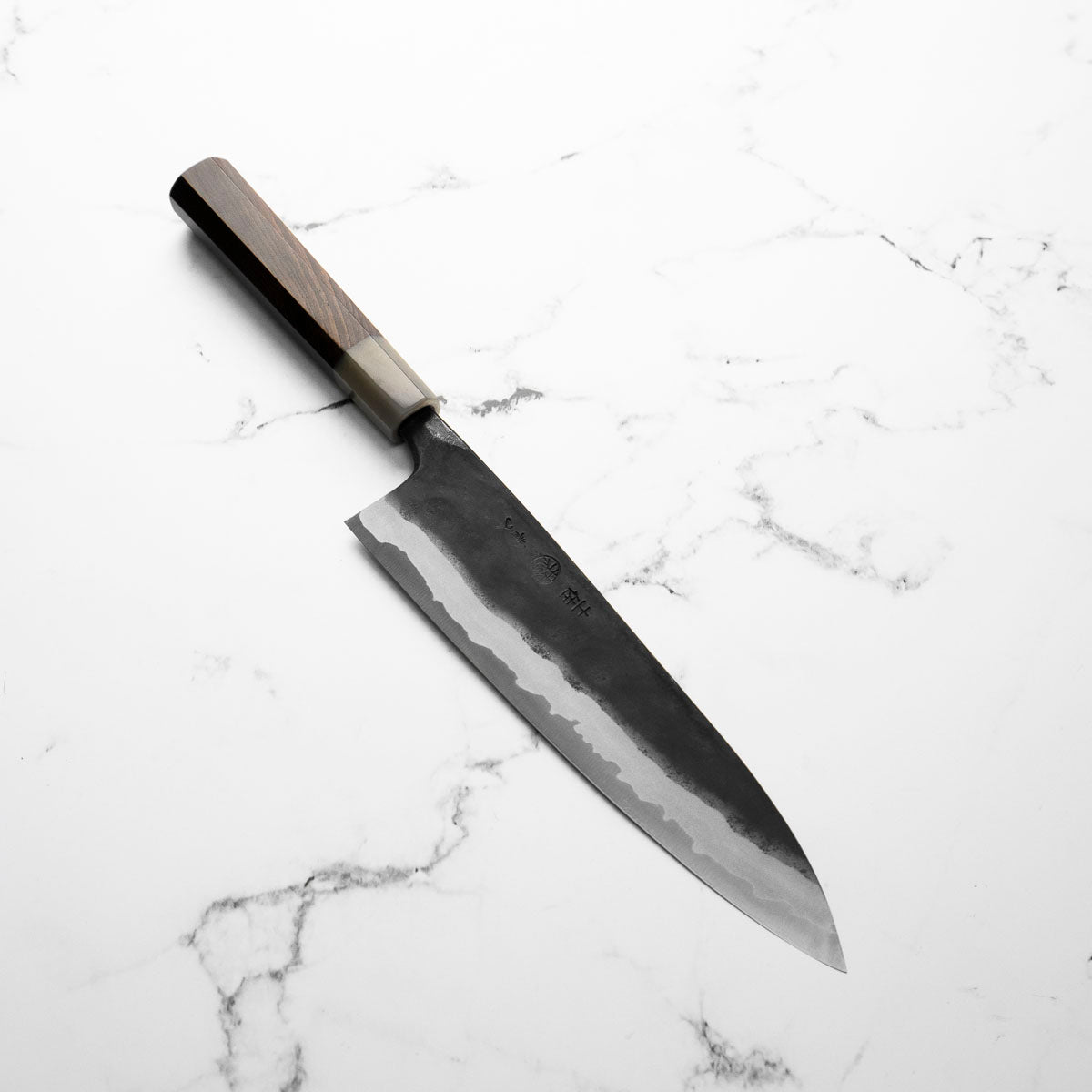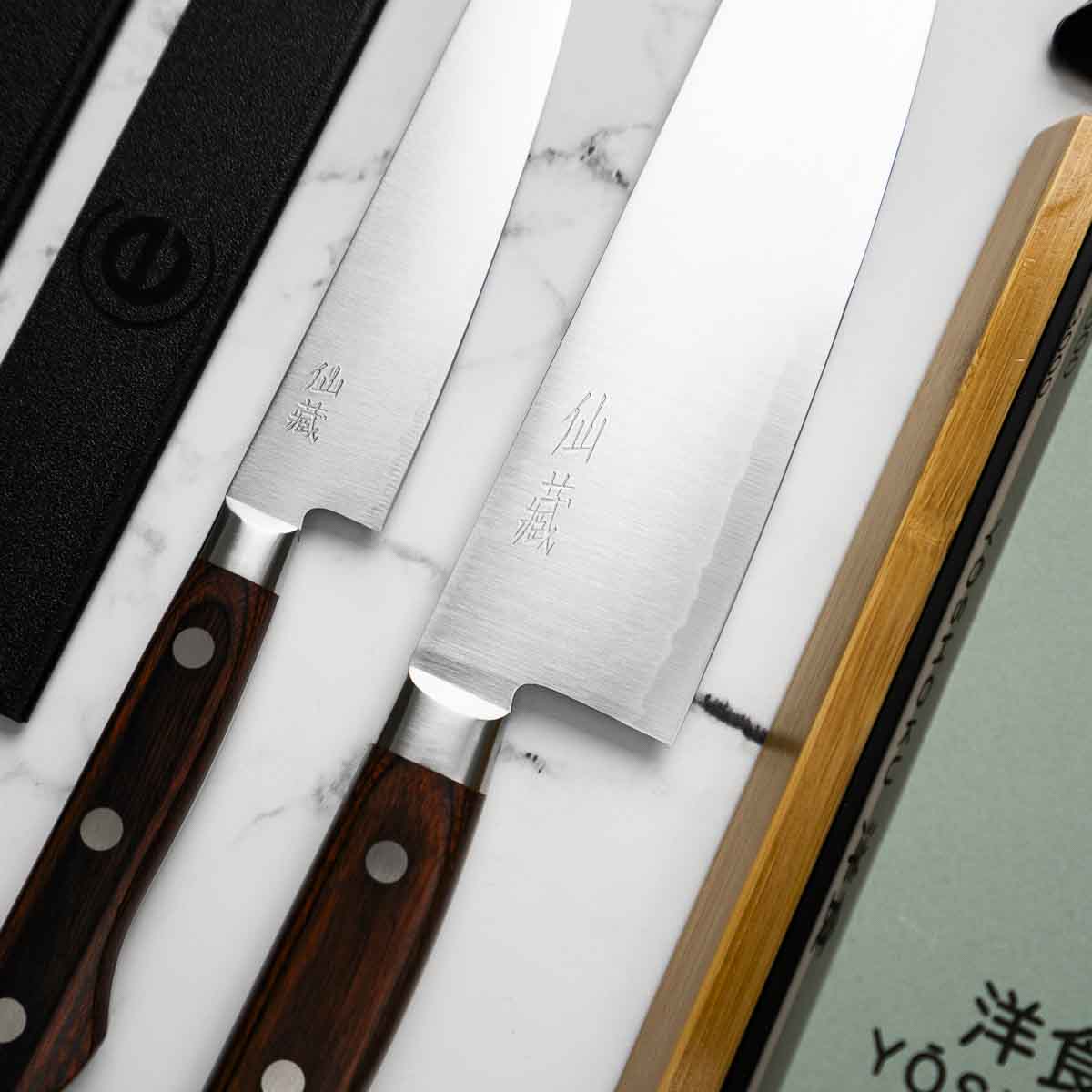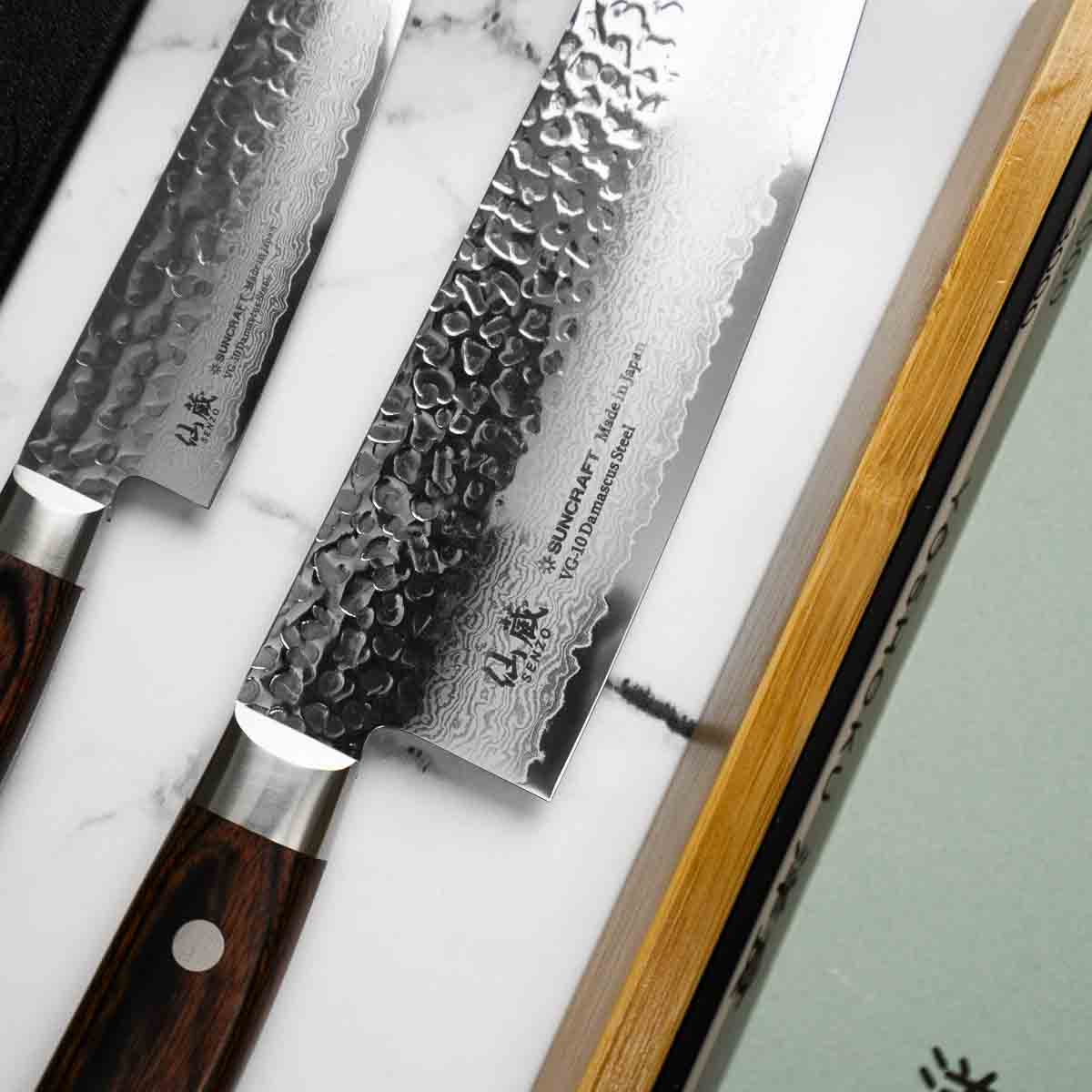Sort by:
90 products
90 products



Hatsukokoro Yorokobi Kurouchi SLD Damascus Gyuto 210mm - Carbon Fibre
Hatsukokoro Yorokobi Kurouchi SLD Damascus Gyuto 210mm - Carbon Fibre



Hatsukokoro Yorokobi Kurouchi SLD Damascus Tsuchime Kiritsuke Gyuto 240mm - Dark Maple
$641.00 USD
Unit price perHatsukokoro Yorokobi Kurouchi SLD Damascus Tsuchime Kiritsuke Gyuto 240mm - Dark Maple
$641.00 USD
Unit price per

Hatsukokoro Yorokobi SLD Kurouchi Damascus Bunka 180mm - Carbon Fibre
Hatsukokoro Yorokobi SLD Kurouchi Damascus Bunka 180mm - Carbon Fibre
170mm SLD Core, Stainless Clad, Copper Damascus Bunka Knife.
Specifications
| Style: | Bunka |
| Blade Length: | 170mm |
| Overall Length: | 310mm |
| Weight: | 181g |
| Blade Height @ Heel: | 46mm |
| Bevel: | Double Bevel |
| Spine Thickness @ Heel: | 3.5mm |
| Spine Thickness @ Mid: | 2.3mm |
| Spine Thickness 1cm from tip: | 1mm |
| Blade Material: | SLD Core, Stainless Clad, Copper Damascus |
| Handle: | Octagon Ebony |

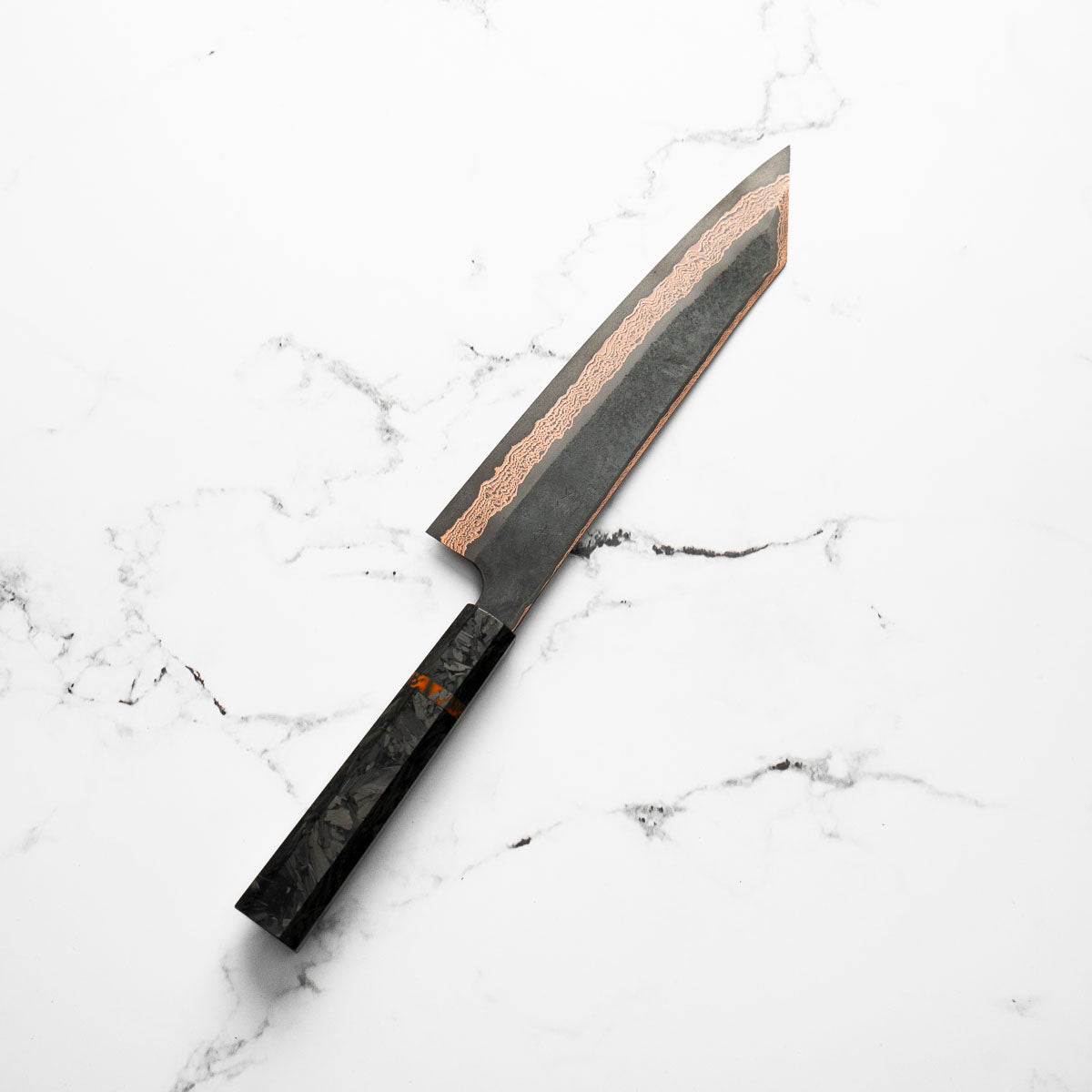
Hatsukokoro Yorokobi SLD Kurouchi Damascus Kiritsuke 240mm - Carbon Fibre
$453.00 USD
Unit price perHatsukokoro Yorokobi SLD Kurouchi Damascus Kiritsuke 240mm - Carbon Fibre
$453.00 USD
Unit price perSpecifications
| Style: | Kiritsuke |
| Blade Length: | 240mm |
| Overall Length: | 375mm |
| Weight: | 247g |
| Blade Height @ Heel: | 52mm |
| Bevel: | Double Bevel |
| Spine Thickness @ Heel: | 3.8mm |
| Spine Thickness @ Mid: | 2.8mm |
| Spine Thickness 1cm from tip: | 1mm |
| Blade Material: | SLD Core, Stainless Clad, Copper Damascus |
| Handle: | Octagon Ebony |
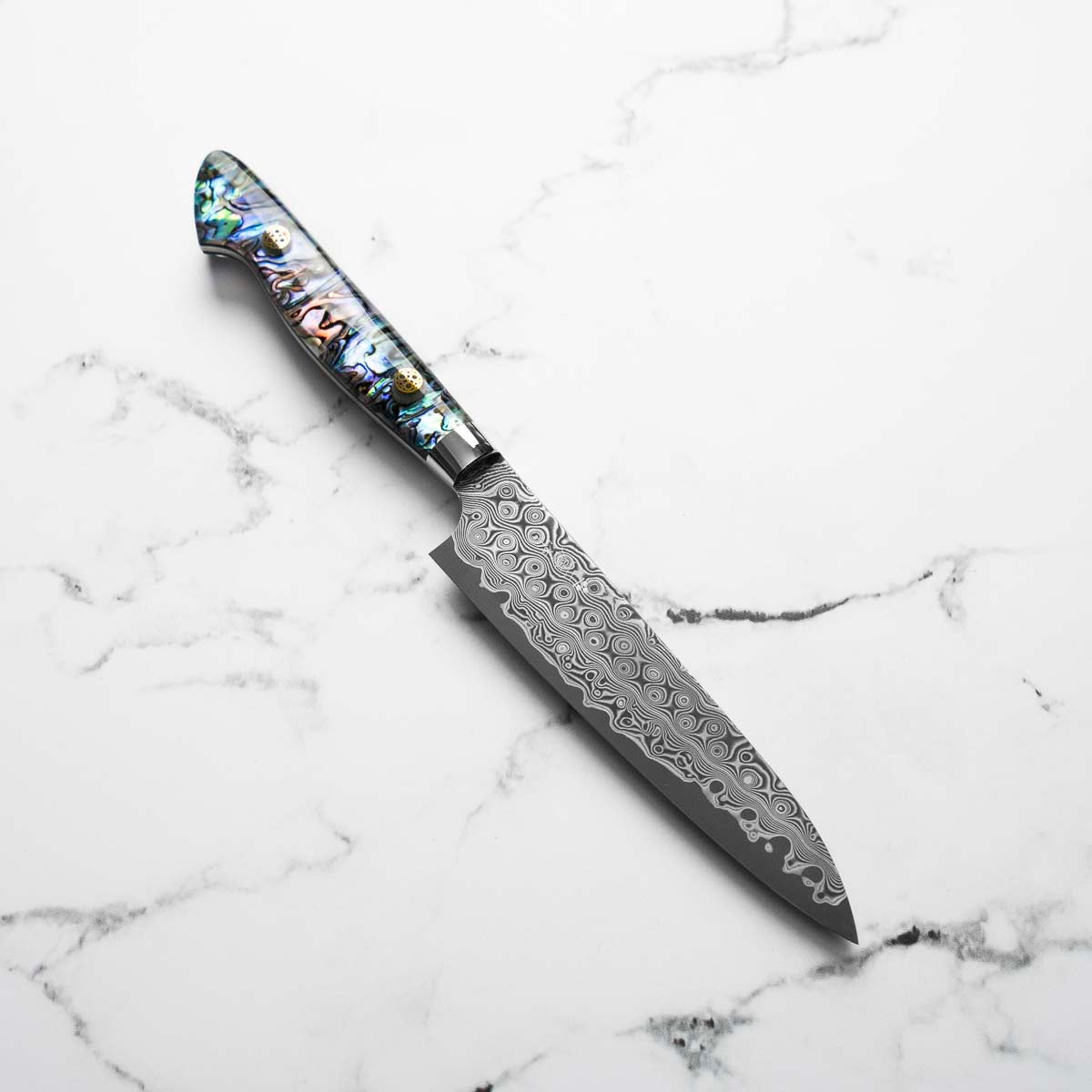

Nigara Hamono "Anmon" SG2 Damascus Petty 150mm - Western Abalone Handle
Nigara Hamono "Anmon" SG2 Damascus Petty 150mm - Western Abalone Handle

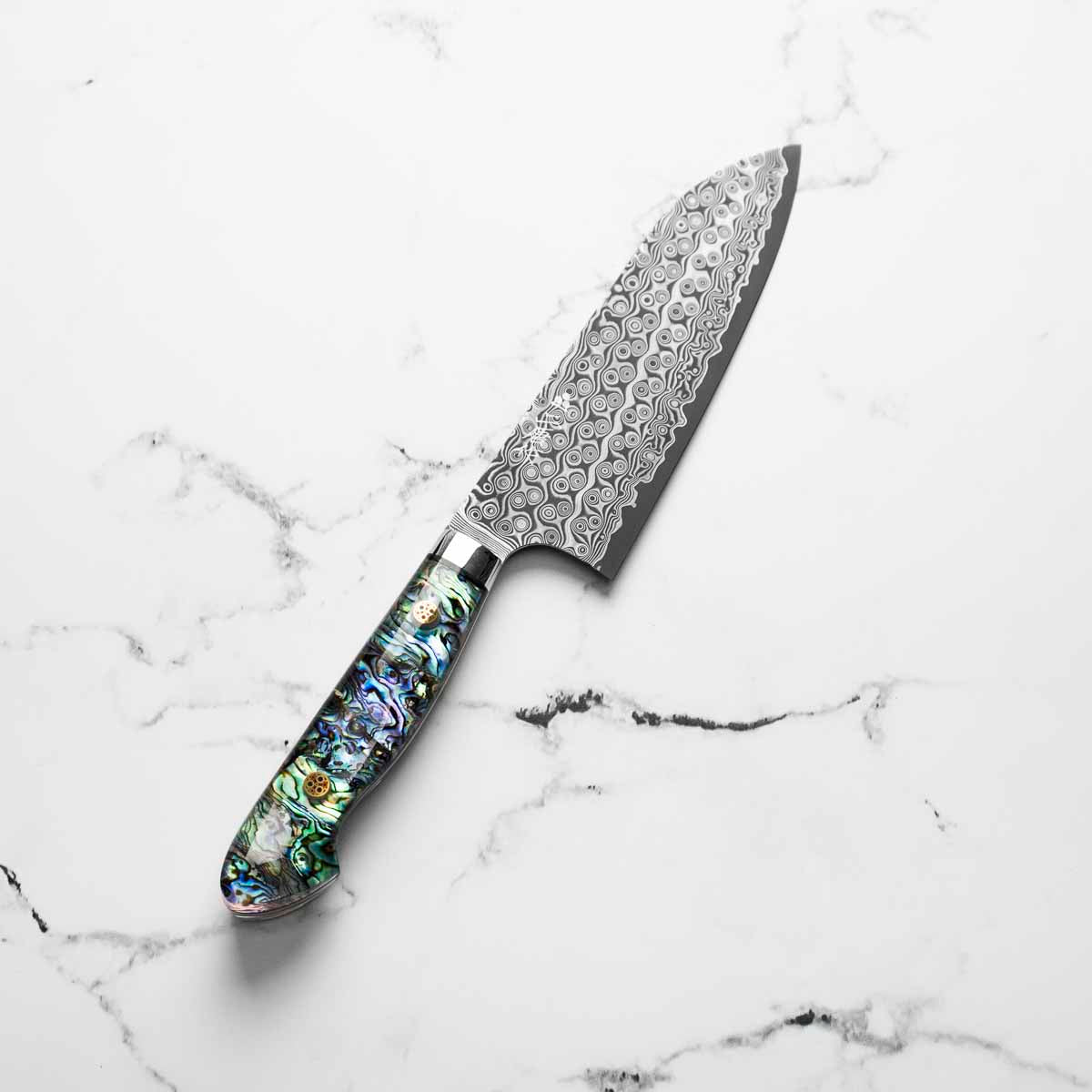
Nigara Hamono "Anmon" SG2 Damascus Santoku 180mm - Western Abalone Handle
Nigara Hamono "Anmon" SG2 Damascus Santoku 180mm - Western Abalone Handle


Nigara Hamono SG2 Kurouchi Tsuchime Sakimaru Sujihiki 270mm - Ebony
Nigara Hamono SG2 Kurouchi Tsuchime Sakimaru Sujihiki 270mm - Ebony
Specifications
| Style: | Sakimaru Sujihiki |
| Blade Length: | 270mm |
| Overall Length: | 418mm |
| Height @ Heel: | 41mm |
| Spine Thickness @ Mid: | 2mm |
| Weight: | 192g |
| Blade Material: | SG2 Core, Stainless Kurouchi Tsuchime Clad |
| Handle Material: | Mono Ebony |
| HRC: | ∼63 |


Nigara Hamono SG2 Kurouchi Tsuchime Sakimaru Sujihiki 300mm - Western Ironwood
Nigara Hamono SG2 Kurouchi Tsuchime Sakimaru Sujihiki 300mm - Western Ironwood


Nigara Hamono VG10 Tsuchime Damascus Bunka 165mm - Dark Maple
Nigara Hamono VG10 Tsuchime Damascus Bunka 165mm - Dark Maple
168mm VG10 Core, Tsuchime Damascus Clad Bunka Knife
Specifications
| Style: | Bunka |
| Blade Length: | 168mm |
| Overall Length: | 312mm |
| Height @ Heel: | 48.5mm |
| Spine Thickness @ Mid: | 2mm |
| Weight: | 158g |
| Blade Material: | VG10 Core, Tsuchime Damascus Clad |
| Handle Material: | Octagon Ebony |
| HRC: | ∼61 |


Nigara Hamono VG10 Tsuchime Damascus Gyuto 210mm - Dark Maple
Nigara Hamono VG10 Tsuchime Damascus Gyuto 210mm - Dark Maple
Specifications
| Style: | Gyuto |
| Blade Length: | 206mm |
| Overall Length: | 350mm |
| Height @ Heel: | 49.5mm |
| Spine Thickness @ Mid: | 2mm |
| Weight: | 181g |
| Blade Material: | VG10 Core, Tsuchime Damascus Clad |
| Handle Material: | Octagon Ebony |
| HRC: | ∼61 |
Specifications
| Style: |
Gyuto |
| Blade Length: | 240mm |
| Overall Length: | 386mm |
| Height @ Heel: | 53.5mm |
| Spine Thickness @ Mid: | 2.2mm |
| Weight: | 224g |
| Blade Material: | VG10 Core, Tsuchime Damascus Clad |
| Handle Material: | Octagon Ebony |
| HRC: | ∼61 |


Nigara Hamono VG10 Tsuchime Damascus Petty 150mm - Dark Maple
Nigara Hamono VG10 Tsuchime Damascus Petty 150mm - Dark Maple
Specifications
| Style: | Petty |
| Blade Length: | 142mm |
| Overall Length: | 267mm |
| Height @ Heel: | 33mm |
| Spine Thickness @ Mid: | 2mm |
| Weight: | 95g |
| Blade Material: | VG10 Core, Tsuchime Damascus Clad |
| Handle Material: | Octagon Ebony |
| HRC: | ∼61 |
Chef's Edge
We pride ourselves on offering an unparalleled selection of Japanese knives. From the versatile Gyuto and the precise Santoku to specialized knives like the Nakiri and Yanagiba, each knife is handpicked for its quality and performance.





